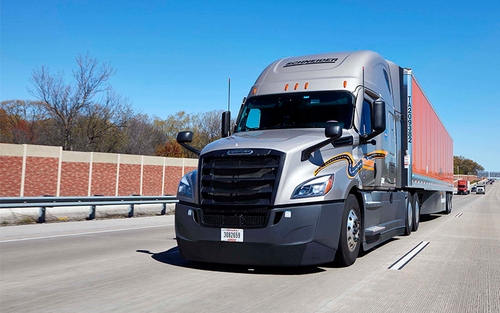Are truck drivers in demand? Why the industry needs drivers


By Driver Resource Center
If you're looking for a career in trucking, now is the time to jump on board. Since the demand for qualified drivers continues to increase, it's an exciting time to be part of this growing industry.
Keep reading to discover why there’s a high demand for truck drivers and why that demand will most-likely keep growing.
Are truck drivers in demand?
The American trucking industry needs drivers. The reason for this is simple: Americans’ need for products and services means there will always be a demand for truckers. From food and clothing to building materials, gasoline and automobiles, there will always be freight to move.
When you ask, “Are truck drivers still in demand?” just look at any of the Black Friday deals happening around the holiday in big box stores.
With all that need for products to be moved around the country, businesses rely on the talents and skills of truck drivers. This all means you will get a steady paycheck instead of worrying that your industry will be going away sometime soon.
Is there a truck driver shortage?
Yes, there is a truck driver shortage. The American Trucking Association (ATA) estimates our industry is short 80,000 drivers. The trucking industry will need to fill this gap to meet the needs of a growing population. From food to retail items, interstate trucking is the most reliable and utilized way to distribute goods.
When you consider more than 72% of the current freight transportation is done by truck drivers, it is easy to see why this career has a strong future. The question shouldn’t be “is trucking a high-demand job?”, but rather, “how do we fill in all these positions?"
Why is there a driver shortage?
This shortage of truck drivers isn't new. In fact, it's been an ongoing issue for some time now. But why does the shortage continue? There are several factors to consider:
- The industry is growing, but the number of drivers isn't keeping up with demand. Although freight rates have fallen in recent years as a result of increased competition, businesses still need to ship goods over long distances to stay competitive and profitable.
- The industry is aging out and younger people aren't as interested in getting behind the wheel. People aged 55 and older make up more than half of all long-haul truck drivers.
- The industry isn't attracting enough women, minorities or veterans. These are groups that could help ease some of these problems if they were encouraged to pursue careers as professional truck drivers.
Will demand for truck drivers keep growing?
With e-commerce and online retail businesses expanding at an unprecedented pace, there's a massive increase in trucking and shipping jobs. This demand for drivers is expected to keep rising. Because of this, there has never been a better time to join the industry.
New drivers have many job opportunities to choose from and the pay for truck drivers has increased 18% over the last two years, according to the ATA. On top of that, many trucking companies offer incentives like sign-on bonuses to attract new drivers. Other advantages to truck driving include:
- More job independence and less stress.
- Opportunities to meet new people.
- Seeing parts of the country you would otherwise not see.
The median salary for all drivers is $53,560 per year according to PayScale. That number jumps up considerably with more experience and seniority. If you want to make even more money than that, there are opportunities for advancement within the industry. These include:
- Owning your own business.
- Becoming a team driver, where you can secure more high-paying contracts.
Ready to start your truck driving career?
Check out Driver Resource Center today to apply for the high-quality Class A CDL training you need to start your career as a professional driver.

Driver Resource Center (DRC) has been providing industry leading CDL training through its network schools since 1993. DRC is proud to be a partner school with Schneider to provide sponsored CDL training. DRC network schools offer 13 locations across the U.S.



